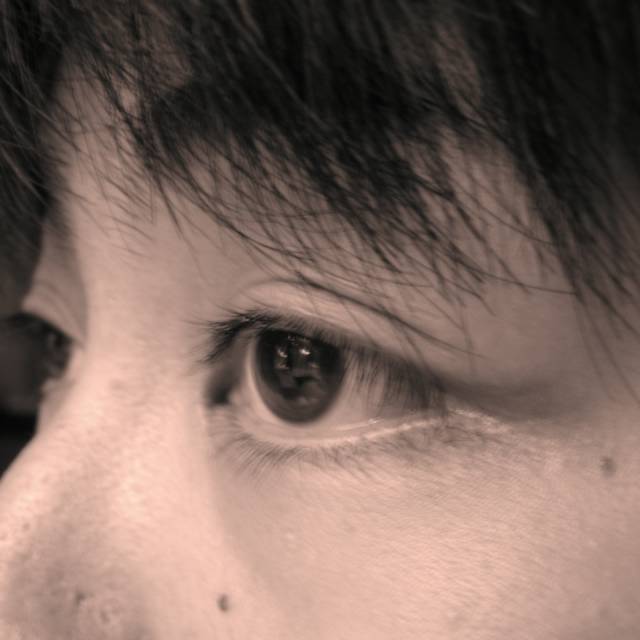"Dolls" by Takeshi Kitano: a promising imagery and fabulous costume spoiled by a heavy-handed treatment
When "Dolls" (a 2002 movie directed by Takeshi Kitano) came out in Japan, I was still there and wanted to see it, but never did. It was quite odd, therefore, to finally get to see the Japanese film in a foreign country, with an English subtitle (which really helped me understand the highly stylized and elongated, thus unintelligible Bunraku narration). However, the film itself was a bit of a disappointment. Here are the reasons.
Three stories of tragic lovers, though connected with each other with common space and characters, do not form a single, unifying story arch. The main story, in which a young man roams around the country, tied with a crimson rope to his fiancée, whom he once abandoned to marry the daughter of the president of his company, only to leave her imbecile as a result of her failed suicidal attempt, is utterly sad and quit compelling. Unfortunately, though, the two side stories, one of a rekindled old love of a Yakuza boss and the other of an extreme act of love of a pop idol fan, interfere with and undermine the effect of the main story, rather than reinforcing it. There is a thematic coherence to some extent, for all of the stories somehow deal with a crazed lover and a lover who chooses to love the crazed, as Roger Evert points out. But the paralell is not presented in a convincing way.
Another, possibly a larger and deeper problem of the film is the fact that the three stories are considerably detached from the Johruri presented at the beginning of the film, to the disappointment of the audience who expect to see a stronger relationship between the traditional Japanese marionette show and the film. The Johruri seems to be "Sonezaki Shinju" or "Double Suicide of Sonezaki," probably the most famous work of Monzaemon Chikamatsu, a renowned Johruri playwright from the Edo period. If my speculation is correct, it is a play in which a beautiful prostitute and a poor store clerk who cannot afford to bail her out commit double suicide to be together in the other world, to transcend the limitation of this world. Kitano sticks to the original Johruri to some extent, for he obviously follows the format of the Johruri--an important and tear-duct-stimulating sequence called "Michiyuki," the elongated, beautified journey of the lovers with only their death in mind.
However, the discrepancy between the relationships of lovers in Johruri and the play is more than distracting. The film's apparent theme, the conscious choice of lovers to be or be with the crazed, risking their own death, does not fit with the somewhat beautified tragic suicides in the Johruri. The double suicide in the Johruri could also be interpreted as the lover's conscious choice to live out of the reason of the world, so that it resonates with the theme of the film, but nonetheless, (again) the parallel is not presented in a convincing way.
Furthermore, the cinematography was not as "stunningly beautiful" as some critics have described it. There are some memorable moments--such as the shot of the crimson rope, which the young man uses to tie his crazed girl to himself, being dragged on the ground drawing a beautiful curve, collecting fallen leaves of various reddish hue. But there are far more awkward shots than excellent ones. Some, such as the scene in which the young lover of the main story momentarily sees an illusion of Johruri marionettes hanging from a pole, are beyond the realm of awkward, plunging into the realm of painful first film of a high school film club. Editing is not satisfactory, either, with so many shots floating in the air without any connection to the previous and following sequences. The costume, designed by Yoji Yamamoto, is absolutely fabulous, especially his use of bright colors reminiscent of the Johruri costume. It is a shame, for the wonderful costume is not well incorporated into the scenes, thus losing much of its appeal.
What salvages the entire film is the superb acting of Miho Kanno, who played the crazed fiancée in the main story. She has been noticeably good in roles of insanity, but in this film, she surpasses herself. She succeeds in appearing to be a woman with a brain damage, whose emotion is paralyzed except for only a few trivial things that catches her attention (like a cheap plastic toy that fascinates her). But what is more striking is the fact that she really looks like a spiritless doll. Her entire body moves like a marionette being awkwardly manipulated by a puppet master, with jerks and jolts, her arms inanimately dangling from the shoulder, her eyes fixed on something nonexistent (just as the marionettes' eyes do not move). When she is first shown to us, sitting on an outside unit of an air conditioner in the psychiatric hospital, she doesn't look alive. She IS a doll, propped up against the wall behind her, her neck barely supporting the lifeless weight of her head. Her best moment is when she briefly sees through the cloud of her insanity and recognizes her lover who once deserted her. She expresses the sudden burst of complex emotion—surprise and joy of finally recognizing her beloved again, then profound hatred and distrust at the (second) realization of his betrayal—only by the movement of her eyes. It is stunningly revealing performance worth waiting for during the slow-paced film.
It’s a shame such an interesting idea to combine a modern fantasy of tragic love and a traditional tragedy of love was wasted by the heavy-handed treatment. With a more sophisticated presentation, the film could have been much much better. The beautiful imagery of the Johruri and the gorgeous kimono-inspired costumes deserve a more careful and aesthetic production.



0 Comments:
Post a Comment
<< Home